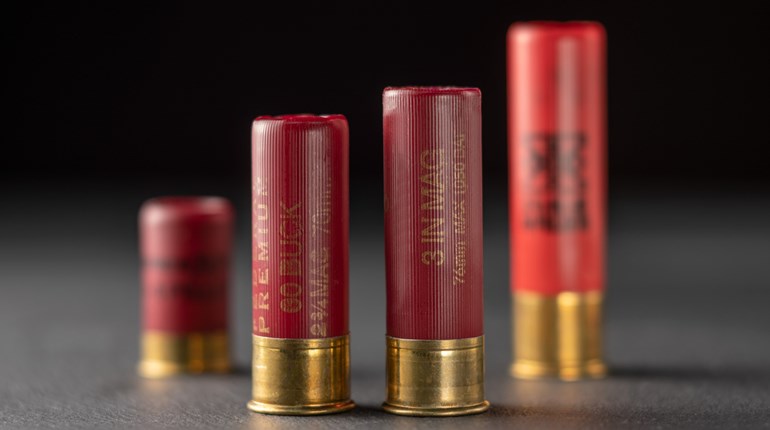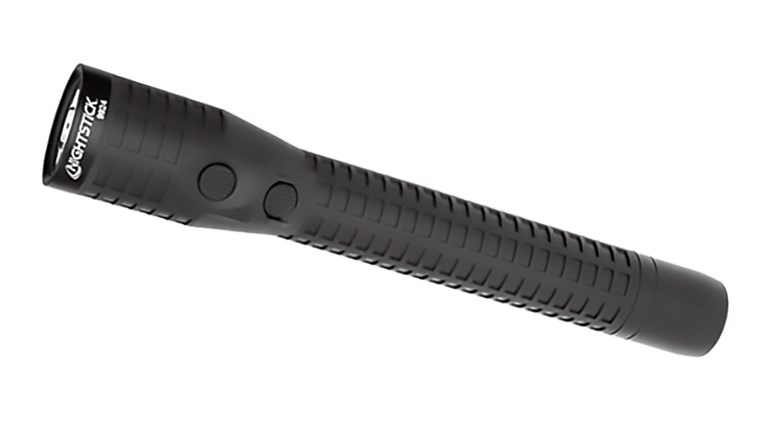
Every part of a shotgun has a purpose, but that doesn’t necessarily mean it is best for your purposes. Here are the practical definitions and functions of the various parts of a typical pump shotgun. This will help you identify any areas where your shotgun could be tactically improved.

1. Buttstock: Intended for securing the shotgun against the shoulder and cheek; used for aiming and controlling the shotgun, and mitigating recoil. Generally, full-figured buttstocks are best.
• Buttpad: A shotgun’s spongy buttpad should cushion the significant force of a 12 gauge’s recoil, but shouldn’t be so sticky or thick that it snags the shoulder as the gun is mounted. Many tactical shotguns are lacking in this area and can be improved with aftermarket recoil pads.
• Comb: The part of the stock that the cheek rests upon. It ensures the eye is aligned perfectly down the barrel, and that firm cheek-to-stock contact—called the cheek weld—mitigates felt recoil. A proper comb is vital to point-and-shoot accuracy, comfort and control of the gun.
• Drop-at-comb: The measurement of how high or low the stock’s comb places the shooter’s cheek in relation to the sighting plane of the barrel.
• Length-of-pull (LOP): The measurement from the middle of the buttpad to the trigger; wingshooters typically prefer longer lengths-of-pull, such as 14 inches, while tactical shooters often prefer less due to a more squared stance. Shorter LOPs often result in more felt recoil, but also make the gun easier to maneuver and manipulate in less-than-ideal stances and scenarios.
• Grip: The area where the shotgun is grasped and controlled by the strong-side hand; a vertical pistol grip allows easier control of the shotgun with one hand, but is not as intuitive for natural point-and-fire shooting.
2. Receiver: Body of the shotgun that facilitates loading, unloading and cocking, and contains the fire-control (trigger) assembly.
3. Trigger: Shotguns that have very heavy triggers with a lot of creep are harder to shoot accurately. Aftermarket trigger assemblies are readily available for most popular designs.
4. Safety: Generally, a shotgun’s safety is located in one of four positions: just behind the trigger (Remington 870), in front of the trigger (older Winchesters), on the tang (Mossbergs) or on the left side near the shooter’s thumb (shotguns designed to look like ARs).
5. Action: There are many variations of pump— also known as “slide-action”—shotguns, but most function in the same basic way. Due to the moving metal-against-metal parts that produce friction, all pumps run more smoothly when oiled.
6. Action bars: Thin strips of metal that link the fore-end to the bolt so the sliding action can move the bolt rearward (and then forward), ejecting the spent shell and loading a fresh one.
7. Loading gate/shell carrier: The area underneath the receiver where shells are loaded into tube-magazine-style shotguns. The loading gate prevents shells from falling out of the gun as they are moved from the magazine into the chamber; the loading gate must be pressed up to load shells into the mag tube and therefore can sometimes pinch the thumb. Customization of the loading gate is a common remedy for pinched thumbs.
8. Action-release button: The button that initiates loading the first shell from the magazine into the chamber and also unloads the shell from the chamber if the gun is cocked (unfired.) This button or lever is often found just behind the trigger guard.
9. Shell-release lever: A hidden lever on the inside of the action, just behind the mag tube that allows a shell to be released. Manually depressing it can unload the magazine without having to load and unload each shell through the chamber.
10. Bolt: Controls the shell for loading, unloading and firing; contains the firing pin and shell extractor; the bolt and bolt face should be cleaned and lubricated frequently.
11. Bolt carrier: The system on which the bolt rides on its way to and from the chamber. Some guns have a bolt carrier, some do not; should be kept clean and lubricated.
12. Magazine: The reservoir where additional shells are stored for quick reloading; varieties include: magazine tube, detachable-box magazine and drum magazine.
• Magazine tube spring: The heavy spring that ensures shells will be pushed down and ultimately fed into battery. Should be cleaned and lubed on a regular basis.
• End cap: Nut that keeps the fore-end, mag tube and barrel assembly together as a unit. Quite frequently houses a forward sling stud.
• Mag plug: This plastic or wooden removable dowel limits the number of shells the magazine can hold. It is often included with waterfowl hunting shotguns to limit magazines to a maximum of two shells, per waterfowl hunting laws.
13. Fore-end: The forward stock used to grip the shotgun with the support hand and to pump its action. Heavy ribbing or checkering for sure purchase is desirable.
14. Barrel: Typical sporting-shotgun barrels are 24 to 28 inches; tactical/home-defense barrels are best-suited in the 18- to 20-inch range. Most companies sell replacement barrels if you want a shorter one. Shotgun barrels must be at least 18 inches; if shorter, they are considered “short-barreled shotguns” (SBS) and are regulated under the NFA, requiring a more onerous process—including obtaining a $200 tax stamp—to own.
15. Barrel extension: The portion of the barrel that attaches it to the receiver and facilitates lockup of the bolt as it moves into battery.
16. Chamber: The rear 3 inches (usually) of a shotgun’s barrel where the shell is housed in the barrel to be fired.
17. Forcing cone: The first third of a shotgun’s barrel that angles the shot charge into a funnel or choke. Typically, longer, more gradual forcing cones produce more uniform patterns.
18. Choke: The constriction placed on the payload to manipulate the spread of its pattern downrange. By definition, it is the percentage of pellets placed in a 30-inch circle at 40 yards.
• Choke tube: A short tube screwed into the muzzle of a shotgun that imparts varying degrees of choke (constriction) on the pattern.
Cylinder: 40-percent pattern; .000 constriction; generally recommended for short-range buckshot and all types of slugs.
Improved Cylinder: 50-percent pattern; .010 constriction.
Modified: 60-percent pattern; .020 constriction.
Full: 70-percent pattern; .030 constriction.
19. Back boring: Refers to the internal dimension of a shotgun’s barrel that is purposely made larger than a 12-gauge’s nominal internal diameter of .73-inch before the payload is constricted by the choke. Back boring—or overboring—is touted to reduce recoil and enhance patterns, but its effectiveness is questionable.
20. Rib: A thin bridge of steel forming a sighting plane that runs the length of the barrel; typically absent on defensive shotguns.
21. Sights: Styles include: brass bead, mid bead, ghost ring, fiber-optic, express-style and rail-mounted optics. Sights can be replaced or improved depending on the shotgun’s intended use.
22. Barrel shroud: Vented hood of metal placed atop a shotgun’s barrel to protect the user against heat generated by rapid firing. However, barrel shrouds in a practical, defensive sense are mainly cosmetic.
Accessories
Flashlight: A necessary add-on to any defensive shotgun; add by way of a fore-end-mounted rail or integral fore-end light.
Sidesaddle: A proprietary name for a shell caddy, often polymer or nylon, that mounts to the receiver of a shotgun; meant for swift tactical reloading; a useful accessory.
Rails: Picatinny rails added anywhere on a shotgun that can be used to attach lights, sights or other accessories.
Optics: Red-dot sights, laser sights or any other optical apparatus used for aiming. They offer more precision in aiming, but also require dependency on zeroing and often batteries.
Sling: Because shotguns tend to be heavy and difficult to hold with one hand, a sling is a useful—some would say critical—accessory for carrying, holding and securing a shotgun.




































